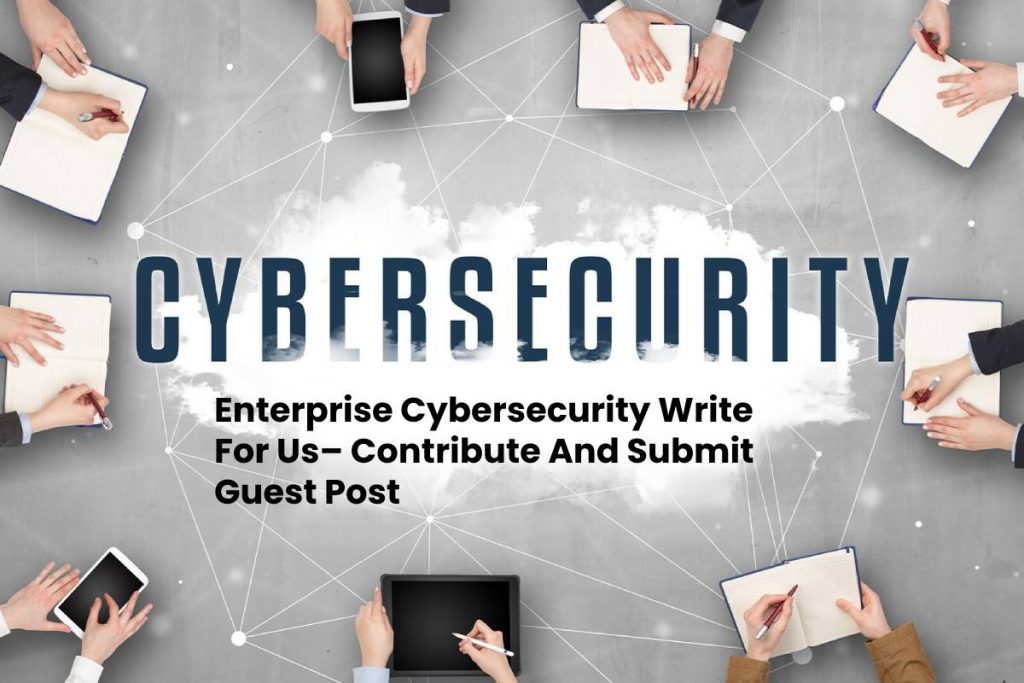Enterprise Cybersecurity Write For Us
Enterprise Cybersecurity Yahoo had an internal data breach that affected 3 billion accounts. The company publicly announced that the incident occurred during Verizon’s acquisition process. Later, the accounts and security questions were stolen, but the payment information was not accessed. It remains one of the largest corporate cybersecurity breaches on record. For Submitting Your Articles, you can email us at
Yahoo is not alone. Big names like LinkedIn, Facebook, Marriott, and Sina Weibo have data breaches. Had Yahoo thoroughly researched potential security risks, it might have been better prepared to handle these changes more effectively in a new system.
When large companies with massive amounts of resources face cybersecurity issues, small businesses are at even greater risk. Your business can be seen as an easy target for hackers and malware if your systems are not updated.
Following this article’s steps, you can protect yourself and your small business from the most common cyberattacks.
What is Enterprise Cybersecurity?
Enterprise cybersecurity is the practice of protecting corporate data and resources from cyber threats. It uses traditional cybersecurity methods to protect data locally and extends this idea to data transmission across networks, devices and end users. Enterprise cybersecurity addresses common security issues such as Denial of Service (DoS) attacks and social engineering and software vulnerabilities. It considers how data travels between devices and networks within the enterprise.
Why is cyber security important for businesses?
Cyber coercions and data leaks can be prevented using best practices for business cybersecurity, e.g. B. by developing and defining your security scope, studying the business architecture and using traditional cybersecurity methodologies. These practices can help protect your business from cybersecurity breaches. cyber threats
Here are two of the top cyber threats you should know about:
- SQL Injection: This injection technique boards the site and database directly. If successful, the attacker can enter a snippet of SQL code that, when executed, allows access to sensitive information or even grants the cybercriminal database editing rights.
- DDoS attack (Distributed Denial of Service): Enterprise Cybersecurity This is a direct attack on your network. It targets a server to take it offline for various purposes. Cyber attackers can also use this type of attack to hide other attack vectors that are more difficult to identify as they all focus on the DDoS attack and offline server repair.
Data leaks
A data leak is a security breach. Personal or sensitive data is stolen or copied by unauthorized persons. Weak passwords can often be the main cause of this, but it can also be caused by:
- Phishing – Phishing is one of the most popular types of scams on the Internet. The emails are sent under the guise of a colleague urging you to take immediate action to prevent an undesirable event. An example would be an email informing you that you will lose admission to your computer if you do not offer your keyword. With this information, they can practice the data to wreak even more havoc and steal even more sensitive data.
- Bait: Bait uses your curiosity against you. Hackers leave malware or viruses on a USB or similar device in a busy area or break room. It is done in hopes that a curious passer-by will pick it up and try to use it. Enterprise Cybersecurity Once used, it activates and installs malware on corporate systems and computers.
- Scareware – Scareware spams the victim with threats and attempts to trick them into clicking a link. A pop-up window will appear saying, “Your PC is infected with malware, click here to fix it”. As soon as the user connects on the wrong link, malware is injected into your company or server, giving the attacker access to your system. This is an example of scareware.
- Pretexting: Pretexting is performed by gaining a person’s trust with access to confidential information. Malicious actors use pretexts to pose as an authority figure, e.g. B. as a tax officer, police officer or colleague. Once trust is established, they will ask questions to obtain sensitive information such as credit card numbers, accounts, and passwords.
How to Submit Your Articles
For Submitting Your Articles, you can email us at contact@supercomputerworld.com
Why Write For Super Computer World – Enterprise Cybersecurity Write For Us
Search Related Terms to Enterprise Cybersecurity Write For Us
Information Security
Optimization
Traceability
Financial Institutions
Whitepaper
Information And Technology
Service-Oriented Architecture.
Legal Requirements
Technology Roadmaps
Configuration Management Database
Asynchronous Communication
Organizational Charts
Standardization
Sabsa Framework And Methodology
The U.S. Department Of Defense (Dod) Architecture Framework (Dodaf)
Search Terms for Enterprise Cybersecurity Write For Us
Enterprise Cybersecurity Write For Us
looking for guest posts
submit an article
writers wanted
guest posts wanted
submit the post
contributing writer
guest posting guidelines
become a guest blogger
guest post
becomes an author
suggest a post
contributor guidelines
guest posts wanted
